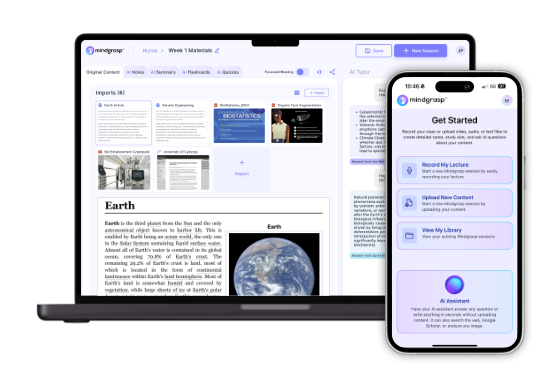
To cram for a communications exam, we need to focus on understanding key theories, not just memorizing facts.
Prioritize major models (like linear communication), gather all materials, and create mind maps of essential concepts. Use active recall through flashcards and practice questions instead of re-reading notes.
Take regular breaks using the Pomodoro Technique (25 minutes study, 5 minutes rest), and don't forget self-care—sleep matters!
The following strategies will transform your last-minute prep from panic to productive.
Why cramming for communications feels harder than other classes
While you might breeze through cramming for other subjects, communications exams can leave you feeling like you're trying to memorize water.
The challenge lies in how communication studies demand deep understanding rather than simple fact-memorization. We're dealing with complex theories that require genuine comprehension – not just flashcard repetition.
Think about it:
- You're juggling verbal and non-verbal elements simultaneously.
- Each communication context (from one-on-one to public speaking) follows different rules.
- Concepts like cultural influences and ethics can't be reduced to simple formulas.
Plus, the subjective nature of communication means there's rarely one "right" answer – making it tough to know exactly what to focus on.
It's no wonder cramming feels harder when you're dealing with interpretations rather than equations!
Boost Your GPA Faster with Mindgrasp
Instantly turn your class notes into smart summaries, flashcards, and quizzes—study less, learn more, and ace your exams.
Try it FreeStep 1: Determine what to study (Prioritize high-impact topics)
Every successful cramming session begins with an essential decision: figuring out exactly what deserves your limited attention. When it comes to communication exams, we need to be strategic about what we focus on.
Start by prioritizing the major theories and models—like the linear model and social learning theory—since these frequently appear on exams. Then, make sure you understand the basic components of communication: participants, messages, channels, and those pesky noise factors that disrupt them.
Don't forget to review different communication settings (from talking to yourself to public speaking), and brush up on ethical considerations like honesty and fairness. These topics aren't just theoretical—they're practical applications your professor likely emphasized in class.
Remember: cramming smartly means focusing on high-impact topics first!
Step 2: Gather your communications materials and make a quick plan
Now it's time for the second critical phase in your cramming strategy: gathering everything you'll need. Round up all your course materials—textbooks, lecture notes, handouts, and online resources—and put them in one place.
Don't forget about those study guides your professor might've provided—they're gold mines of information!
Next, create a simple mind map or outline that highlights the key theories and communication models you've covered. This gives you a bird's-eye view of what you need to know.
Organize your materials by topic importance, with special attention to the communication process components (sender, message, channel, receiver, feedback).
Step 3: Use active recall to study communications (Don’t just re-read)
With your materials organized, let's talk about the most powerful study strategy you'll need—active recall. Simply re-reading your notes won't cut it when you're cramming! Instead, test yourself on the material.
Try these active recall techniques:
- Create flashcards with communication theories on one side and definitions on the other
- Summarize key concepts in your own words without peeking at your notes
- Join a quick study group where you quiz each other on important models
- Set a timer and give yourself mini-tests to simulate exam pressure
When we actively retrieve information from memory—rather than passively reviewing it—we strengthen those neural pathways. This makes recall during your exam much easier, even when you're stressed and tired.
Step 4: Break down complex communications processes with diagrams
When your brain feels overloaded with communication theories, visual diagrams can save your study session!
We've found that turning abstract concepts into pictures helps them stick in your memory. Try these quick diagram methods:
- Draw a flowchart showing how messages travel from sender to receiver (don't forget noise!)
- Create a concept map connecting the four communication settings (intrapersonal, interpersonal, small group, public)
- Use Venn diagrams to compare verbal and non-verbal communication
- Sketch a simple timeline of communication principles
These visuals work because they transform complicated ideas into bite-sized, memorable chunks.
Next time you're stuck on understanding encoding/decoding or context factors, grab some paper and start drawing – your brain will thank you!
Step 5: Leverage AI study tools like Mindgrasp AI for communications
Technology has transformed how we prepare for exams, and Mindgrasp AI might be your secret weapon for acing that communications test! When we're down to the wire, AI study tools can save us hours of precious cramming time.
Try Mindgrasp for Free!
Experience an easier, faster way to boost your GPA. Sign up now to try Mindgrasp AI for free and see how AI-powered learning transforms your study routine.
Try it FreeMindgrasp AI specializes in communication theories—it'll summarize complex models and create flashcards of key terms in seconds.
Need to test yourself? It generates practice questions tailored to your course content (a lifesaver for identifying weak spots).
What we love most is how it analyzes your performance and builds personalized study plans. Focus on what you don't know, not what you've already mastered!
The system even looks at your past assignments to predict what might show up on the exam—talk about working smarter, not harder!
Step 6: Memorize key terms and definitions with flashcards & mnemonics
Now that you've got AI on your side, let's sharpen your recall with good old-fashioned memory techniques! Flashcards are your best friends for drilling those key communication concepts into your brain. Create cards with terms on one side and definitions plus examples on the other.
Try these approaches:
- Group related concepts together (put all persuasion techniques on blue cards, for example)
- Create memorable mnemonics (remember "SOLER" for effective listening: Squarely face the person, Open posture, Lean toward them, Eye contact, Relax)
- Quiz yourself daily, focusing on both term-to-definition and definition-to-term
- Space out your review sessions—study your flashcards today, tomorrow, and three days from now
Don't just memorize—understand how these terms connect!
Step 7: Practice with questions and problems
Testing yourself is the ultimate way to prove you've actually learned the material—not just skimmed it! Grab those old exams or textbook problems and put yourself to the test.
We've discovered that creating our own practice questions really helps cement those communication theories in our brains.
Why not join a study group? Quiz each other on important concepts—it's way more fun than studying alone! Plus, you'll get different perspectives on tricky topics.
Don't forget to time yourself when working through practice questions. This simulates real exam pressure (scary, as we understand!) and helps with pacing.
After practicing, review your answers with classmates or your professor if possible. Those "aha!" moments when you spot your mistakes are pure learning gold!
Step 8: Take short breaks and look after yourself
While cramming for your communications exam might feel like a non-stop marathon, taking regular breaks is actually key to your success!
The Pomodoro Technique suggests studying for 25-30 minutes, then taking short breaks to prevent burnout and boost retention. Your brain needs these pauses!
During your short breaks, try these simple self-care strategies:
- Stand up and stretch or take a quick walk (even 5 minutes helps!)
- Drink water regularly—dehydration kills concentration
- Eat balanced meals and healthy snacks for brain fuel
- Practice deep breathing to lower stress levels
- Prioritize sleep—it's when your brain files away what you've learned
Cramming for communications in 1 Day, 3 Days, or 1 Week
We've all been there—facing a communications exam with limited time to prepare, whether it's one day, three days, or a whole week.
Your cramming strategy needs to match your available time, with one-day plans focusing on key concepts and flashcards, three-day approaches breaking content into themed study sessions, and one-week preparations allowing for deeper learning through textbooks, mind maps, and study groups.
Let's look at how to make the most of whatever time you have left—because even with just 24 hours, you can still organize your studying to maximize your chance of success.
Cramming for communications with one week left
Having a full week before your communications exam gives you a decent cushion—but don't get too comfortable! Start by organizing all your materials and creating a reading list of key theories you need to master.
Break your week into daily focus areas—dedicate Monday to interpersonal theories, Tuesday to media effects, and so on. Group interaction concepts often show up on exams, so don't skip those!
We recommend these daily techniques:
- Summarize concepts in your own words
- Make flashcards for important terms
- Practice past exam questions
- Teach concepts to a friend
Don't forget to schedule breaks—cramming works better when your brain gets rest. With a full week, you've got time to be strategic rather than panicked.
Cramming for communications with three days left
So you've got just three days until your communications exam—things are getting real now!
It's time to buckle down and focus on high-yield material. First, create flashcards with the core elements of the communication process—sender, message, channel, receiver, feedback, and noise—for quick, repetitive review.
Don't waste time trying to memorize everything. Instead:
- Review your lecture notes and highlight recurring themes
- Focus on models you struggled with (transactional model, anyone?)
- Take at least one practice test to identify weak spots
- Form a quick study group to explain concepts to each other
Cramming for communications with one day left (24 hours)
With just 24 hours left before your communications exam, it's crunch time! Focus on mastering the communication process components—participants, messages, channels, context, and noise.
We recommend:
- Create quick-reference flashcards for key theories like transactional model and social penetration theory
- Quiz yourself on essential terminology—intrapersonal, interpersonal, group, and public communication
- Synthesize your notes into one-page summaries for each major concept
- Practice explaining ethical principles out loud to reinforce understanding
- Take short breaks (seriously!)—your brain needs time to process
Don't waste time on obscure details. Instead, guarantee you can confidently explain fundamental concepts.
Common mistakes to avoid when cramming and how to fix them
While cramming for a communications exam might seem like your only option when time is short, many students fall into traps that make their last-minute studying less effective.
We've all been there! To maximize your knowledge of communication concepts, avoid these common mistakes when cramming:
- Passively reading without engagement (fix: summarize key points in your own words)
- Studying for hours without breaks (fix: use 25-minute focused sessions with short breaks)
- Neglecting practice questions (fix: test yourself with flashcards or sample quizzes)
- Trying to learn everything (fix: prioritize high-value topics you're least confident about)
- Using only one study method (fix: mix visual aids, discussion, and teaching concepts to others)
Remember—even with limited time, how you study matters as much as what you study!
Final Takeaways on communications cram studying
Although cramming isn't ideal, we've discovered that strategic last-minute studying can still help you grasp essential communication concepts before exam day. Focus on understanding key communication theory models rather than memorizing every detail.
Remember these final takeaways:
-
Organize material by communication process components (sender, message, channel, receiver)
-
Use active recall instead of passive re-reading
-
Take short breaks to keep your mind fresh
-
Create simple flashcards for important terms
-
Focus on big theories (like cultivation theory and social penetration theory)
When time is limited, quality trumps quantity. Don't panic if you can't cover everything—understanding core concepts will serve you better than memorizing random facts.
You've got this! Just breathe, focus, and apply what you've learned.
Download Mindgrasp from the App Store
Access Mindgrasp at your desk for in-depth research and writing projects, or use the mobile version to easily access your content on-the-go or record live lectures.
Download the iOS App
